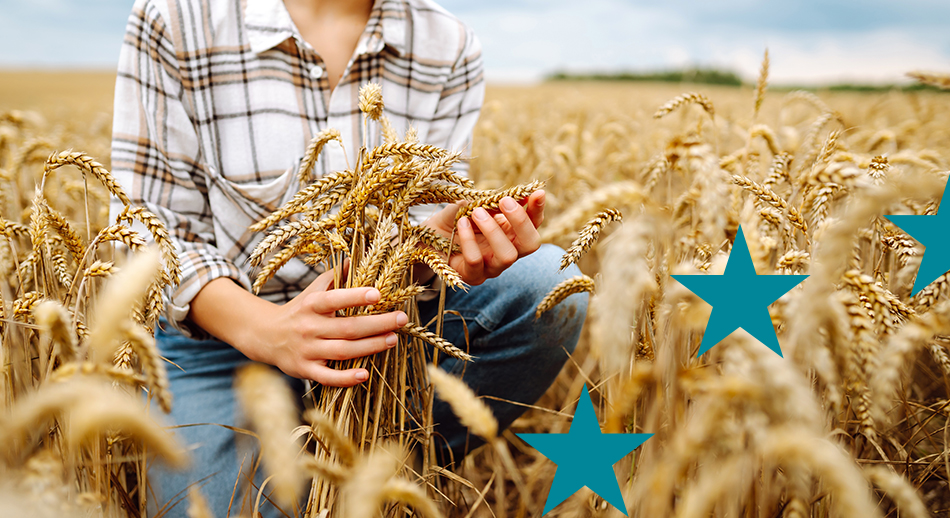A comprehensive guide to EU development initiatives in rural areas: funding, projects and resources.
A world of resources and opportunities: the Rural Toolkit
It is said that there are more organisms in a handful of land than human beings in the whole world. Even in the world of European funds, the rural component is extremely rich in “life” and opportunities.
The European Union has dedicated a specific platform to EU funding and support opportunities for rural areas: with the aim of “helping local authorities, institutions and stakeholders, businesses and individuals to identify and take advantage of existing EU funds, programs and other funding and support initiatives and to promote development in rural areas. “It is called “Rural Toolkit” and is a real guide dedicated to EU funds, programs and initiatives in the “agro” and rural areas. Let’s find out together.
Rural Toolkit: what it is and where it comes from
The Rural Toolkit platform is very simple: all its contents can be browsed from a front page, which provides a general overview.
The Rural Toolkit is one of the initiatives stemming from the “Rural Vision,” or the EU’s long-term vision for rural areas, which aims to develop stronger, connected, resilient and prosperous rural areas with the 2040 horizon. The “Rural Vision” starts with some significant data: the EU’s rural areas cover 83 percent of the EU’s local organisations and are home to 137 million people, or 30 percent of the EU’s population. It provides an action plan divided into the 4 action areas (strengthening, connection, resilience and prosperity), 10 shared goals and, in addition to the Rural Toolkit, other interesting tools:
- A Rural Observatory, which offers data and analysis on how rural centers and areas rank in relation to “urban” or “intermediate” areas based on key indicators, which can also be visualized through interactive maps (showing their geographic distribution and evolution over time), a “fine-grained” overview with basic data for each region, subregion, district or municipality, and a review of thematic analyses of relevance to the rural world;
- A platform for exchange and mobilization called the Rural Pact, aimed at bringing the voice of the rural world to the political agenda, fostering collaboration and mutual learning, and supporting joint initiatives. It involves actors of all kinds (public authorities, third sector, businesses, citizens, universities and research centers) and offers, among other things, a collection of good practices, a review of useful documents and publications, and a production of reports and information papers.
The European Commission recently published a report describing the progress and achievements of the Rural Vision in its first 30 months of implementation (June 2021-December 2023).
Rural Toolkit: the tools
The tools in the Rural Toolkit are few, but simple and effective. Three in particular are:
- Find Funding: an interactive platform that captures directly managed, nationally or regionally managed funding opportunities and financial instruments, which in turn can be filtered according to the type of beneficiary body (civil society association, cooperative, public body, SME, individual citizen, etc.), the type of activity to be funded (with 20 options available) and the type of support required (grants, financial instruments and technical assistance). For each proposed opportunity, a tab is presented that (somewhat like on our Guidebook) leads to relevant links in the program and initiative, and explains its relevance to rural areas;
- Be inspired: a wide range of examples, case studies and stories on how various actors have used EU support mechanisms in rural areas. You can search for sources of inspiration through a map, keywords and types of funds and programs. The archive is still being enriched and includes 74 experiences to date;
- Resources: a collection of similar guides dedicated to EU funding opportunities in other specific areas: broadband, culture, education, energy, environment and tourism (which we have also discussed in articles dedicated to culture and tourism), accompanied by handbooks, atlases, platforms and sites dedicated to local and territorial development.
Rural development is thus much more than a set of dedicated funds and grants (which in themselves, cover about a third of the community budget). It is an EU policy strategy that invests all sectors, territories and citizenship. The Rural Toolkit allows us to appreciate its value, complexity and inspiration for implementing new projects.




